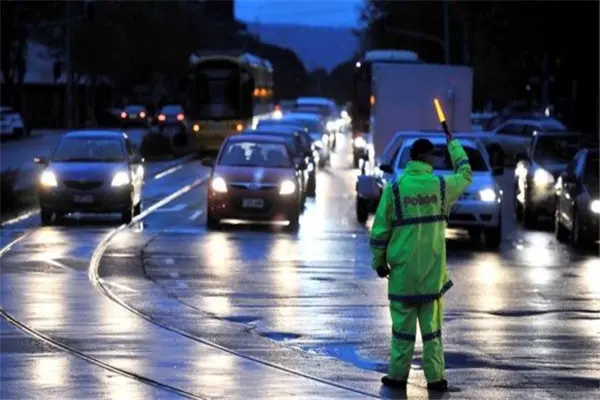A thunderstorm which killed two people in Victoria has been dubbed a "state disaster."
Emergency services and hospitals across Victoria have reached breaking point after a thunderstorm that hit the state late on Monday night caused a mass incident of "thunderstorm asthma."
Thunderstorm asthma is a phenomenon which occurs when grass pollen absorbs moisture and bursts into much smaller particles.
The small particles are easily dispersed by strong winds and get into the nose, lungs and and bronchial tubes of people, causing allergic reactions.
The mass incident on Monday night, which came as a result of a storm sweeping across the state that took temperatures from 38 degrees Celsius to less than 20 degrees in an hour, resulted in the deaths of at least two people who were left waiting too long for ambulances.
Ambulance Victoria received more than 2,000 calls, more than seven times the usual work load, as the phenomenon took its toll, prompting a "major disaster response" from emergency services.
The two people who died, both in Melbourne's west, waited at least an hour and a half for an ambulance, a response time Health Minister Jill Hennessy said would be the subject of a full review.
"There'll no doubt be a full review of what occurred last night and what the clinical outcomes were as a result," Hennessy told reporters on Tuesday.
"No doubt, there will be lessons to learn, there always are in these cases, but every part of our emergency management surge occurred correctly."
Paul Holman, the state health commander, said in 40 years in the job he had never seen a response like this, calling it a "state disaster."
"It's a phenomenon we've only seen rarely before," Holman said.
"Within an hour (of the storm hitting) we'd received 160 calls, and had run out of resources.
"Every hospital is basically full.
"I can only speculate, but I think it was caused by the huge amount of irritants and pollens in the air.
"We've called on our colleagues at the Metropolitan Fire Brigade (MFB), asking their Emergency Medical Response team to operate outside their normal parameters. And we've also called on Victoria Police to assist us."
Mick Stephenson, emergency operations manager for Ambulance Victoria, said they had received more than seven times the usual number of calls between 6 p.m. and 11 p.m. local time on Monday night.
He said 60 off-duty ambulance crews were called into work in an attempt to manage the high demand.
"We essentially had a day's workload within five hours," Stephenson told the Australian Broadcasting Corporation (ABC) on Tuesday.
"In the 15 minutes from 7:00 p.m. when we would expect about 30 triple-0 calls for ambulance there were 200 calls, that's a call every 4.5 seconds.
"This was an extraordinary and unpredictable increase in demand in a very short period of time."
A Melbourne doctor who wished to remain anonymous said many staff were called in to work 16-hour shifts to deal with the chaos.
"The hospitals are all at breaking point," he told Fairfax Media on Tuesday.
"A number of hospitals came very close to running out of Ventolin altogether."
The air quality had improved by Tuesday morning but people, asthmatics in particular, were warned to be cautious.
(APD)
 简体中文
简体中文

